Amateur operator Jeffrey Swain Makes Sure His Mentor’s Callsign, K3SUK, Lives on.
Once upon a time, American teenagers—and plenty of adults with subversive tendencies—turned to MAD magazine every month for a healthy dose of satirical skewering of the political and cultural landscape, killer caricatures, and beloved features like Spy vs. Spy by Antonio Prohias, Al Jaffee’s endlessly clever hidden picture fold-ins, movie and TV show parodies, and the iconic face of the publication’s perpetually youthful cover boy—gap-toothed Alfred E. Neuman.
Neuman’s visage first appeared on the cover of a MAD paperback compilation in November 1954 and next on the March 1955 cover of the comic book, which would go on to grow a loyal readership in the millions. Neuman has been portrayed on almost every cover since, taking on the persona of everyone from Uncle Sam to Justin Bieber. The defining image of Neuman, used for a late 1956 cover, was created by Norman Mingo.
He also appeared as the soldering-impaired “Al Freddy Newham” on the cover of the April 1967 issue of 73—a copy of which I found in a box of vintage amateur radio magazines gifted to me by a friend, Tom Schurr, WN8SDK (call has been reassigned). The artist in this case was Wayne Pierce, K3SUK, who had created multiple covers for 73 and other radio publications.
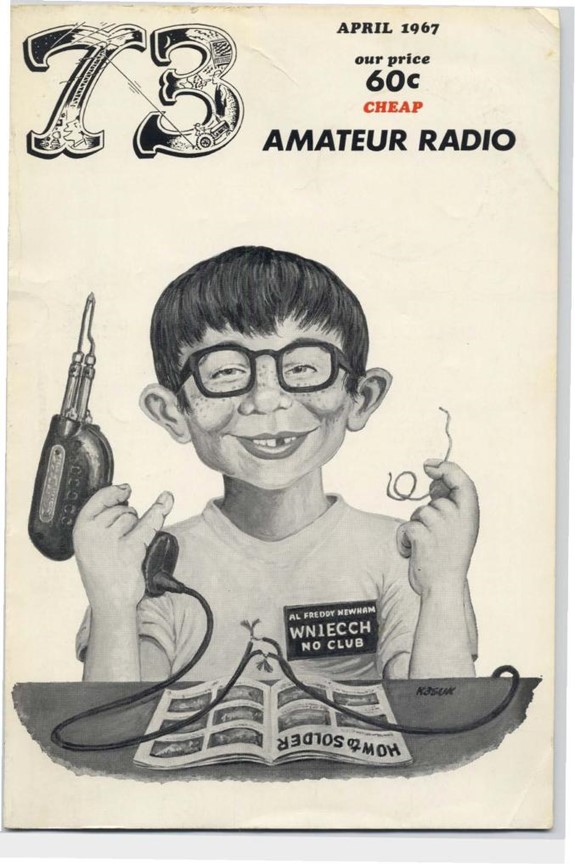
Below, hams from the Portage County Amateur Radio Service (many from DX Engineering) incorporated K3SUK’s drawing into a photo from one of their Build Days, featured in their newsletter:
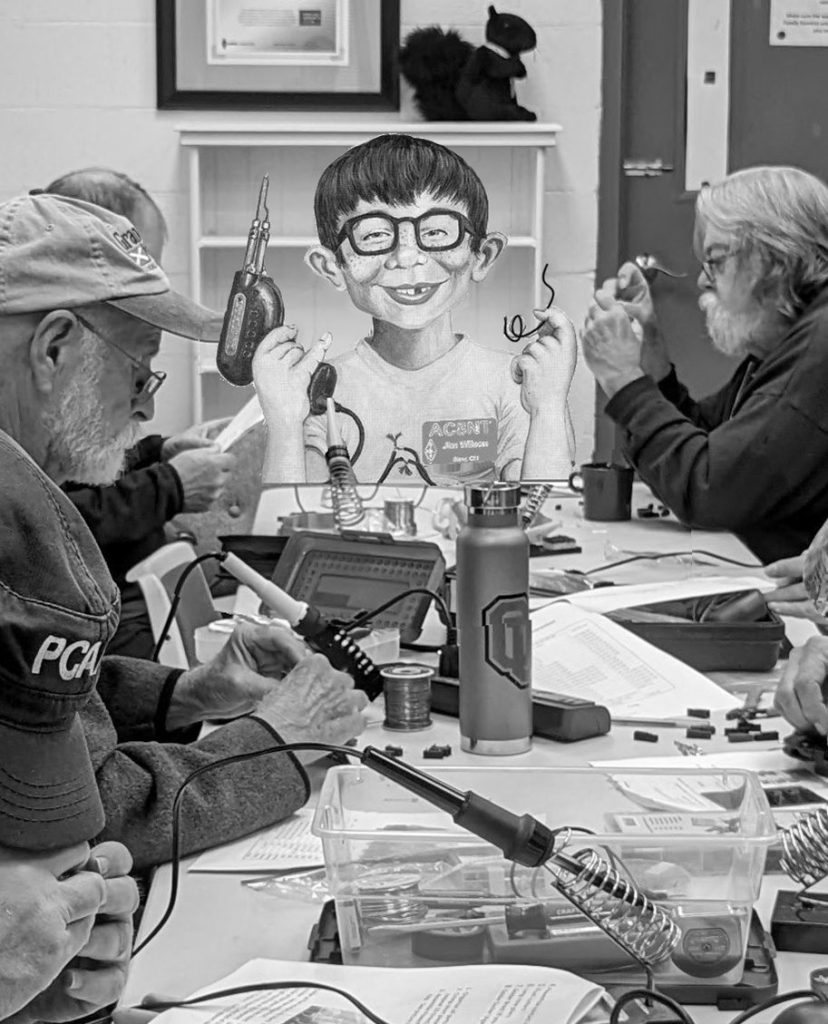
In addition to drawing the April 1967 cover, K3SUK created amazingly accurate ham-related takes on three MAD staples, all of which appeared in this issue: Spy vs. Spy, Don Martin’s cartoons, and the “clichés” of illustrator Paul Coker, Jr. (perhaps most famous for his character drawings of Rankin/Bass’s animated classic, Frosty the Snowman). It’s interesting to note that the regular Spy vs. Spy strip had Morse code dots and dashes spelling out “BY PROHIAS.” Pierce’s version below reads, “BY K3SUK.”
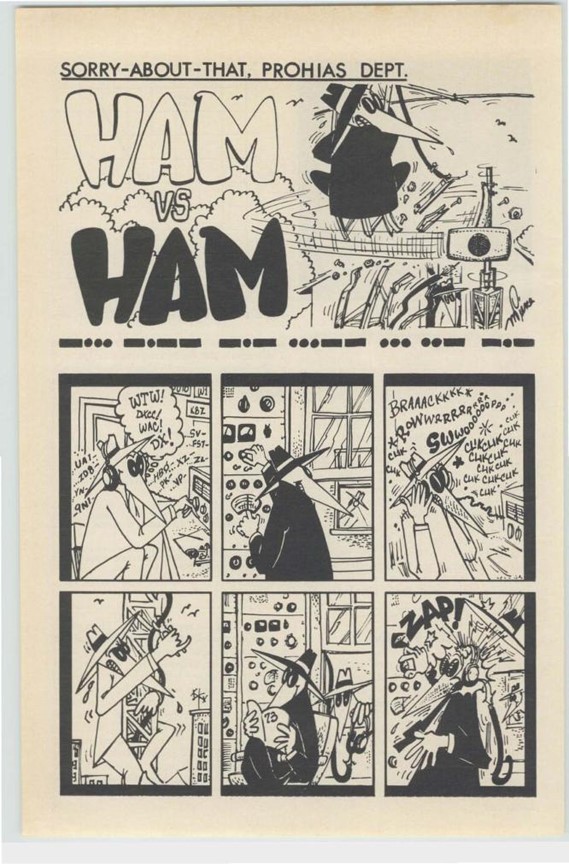
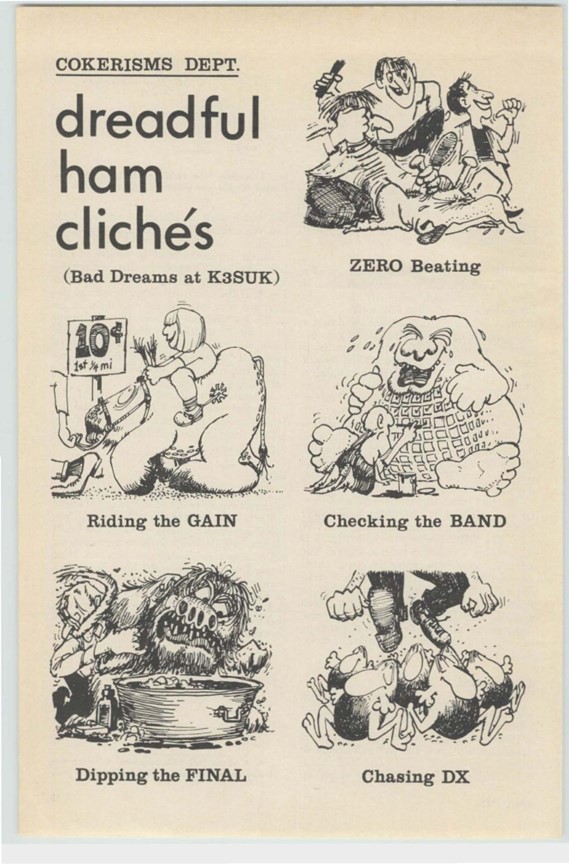
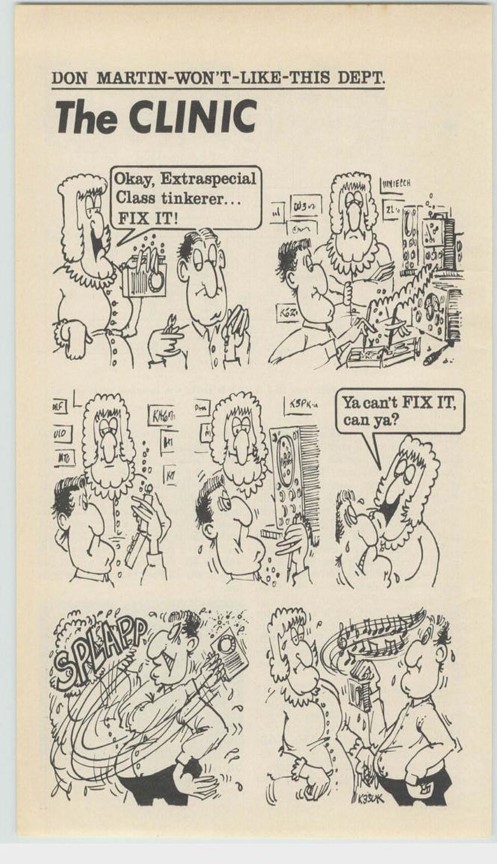
K3SUK would lend his enormous talent to other 73 covers over the years, including this one:
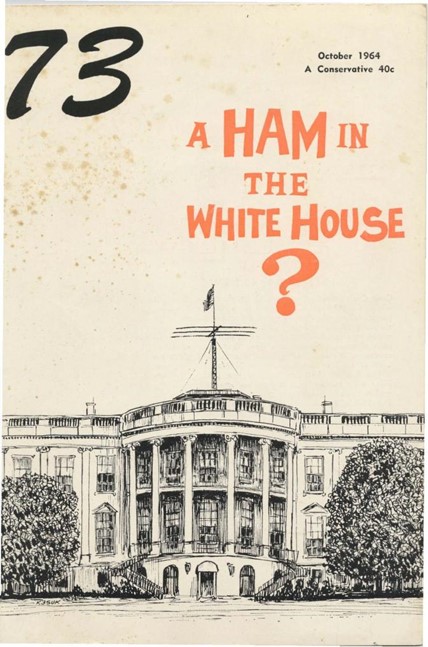
You can enjoy the entire April 1967 issue, as well as other issues of 73 magazine (1960-2003) for free at the Internet Archives. It’s a treasure trove of technical information, nostalgia, and famous rants from charismatic publisher Wayne S. Green II, W2NSD/1 (SK), whose lengthy editorials (under the title “Never Say Die”—NSD), were known to both challenge and champion the ham radio community. Here’s W2NSD/1’s decidedly MAD-like QSL card:

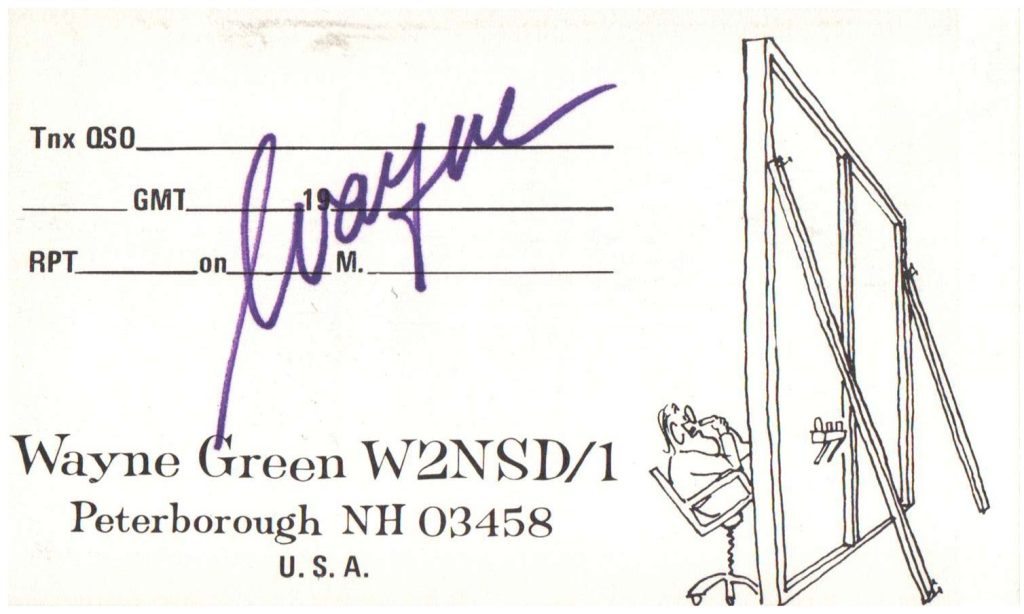
Honoring Wayne Pierce, K3SUK
OnAllBands reached out to longtime ham Jeffrey Swain, who honored Wayne Pierce by adopting the K3SUK callsign. He shared with us his memories of the man and artist who nurtured his love of ham radio. Here’s what he wrote:
I first met Wayne (Mr. Pierce) when I entered 6th grade (73-74) at the Oxford Area Intermediate School. Wayne was the art teacher, and as a collateral activity he also sponsored the “Ham Radio” club. Well, having come from a family with four brothers who were constantly tinkering with things, the ham radio club seemed to be right up my alley.
The club didn’t get funding that I knew of from the school district, so we didn’t have a lot of equipment. The only real gear was a Hallicrafters SX-111 receiver. While most of the other kids seemed to be content with finding and listening to foreign broadcast stations, I was the only one who seemed to be interested in the actual person to person communications that was going on in the ham radio world and for that I think I was rewarded with a lifetime friendship with Wayne and his family.
Periodically, Wayne would bring in his HF transceiver from home. At the time his primary radio was a Heathkit HW-100, and we had a dipole mounted on the roof of the school that covered 75 and 40 meters. I helped him put that up after school one day and that was really what got me started in the ham radio world.
He brought me in the old red and black ARRL license manuals for the Novice class and an old code practice oscillator to help learn the code. At the time you had to send and receive five words per minute. During that first summer between 6th and 7th grades he let me bring the old receiver home and I spent lots of time listening and becoming more obsessed with the hobby. Periodically, he would invite me to his house where I could operate his radio under his supervision as a control operator. While he wasn’t a master of electronics, he did a great job of explaining everything that was in the license manual, and he prepared me for the proctored Novice exam which I took and passed both the written element and the code during the summer between 7th and 8th grade. I became WN3ZXX.
By that time, Wayne had carted me off to hamfests and Field Days and introduced me to the small handful of ham radio operators in Oxford, PA. They all took me in like I was one of their own. I think Wayne was as anxious to get me on the air as I was, and between him and the local hams we managed to put a station together consisting of an old Heathkit AR-3 receiver and a homemade 807 final crystal controlled beast of a transmitter that we tuned up into a light bulb. For the longest time, the only person I managed to contact was Wayne, who only lived about a half mile away across the cornfields. We would set up schedules to get on 80 meter CW on one of the frequencies that I had a crystal for.
Sadly, the old receiver broke and Wayne and I spent countless hours at Jack Chamber’s (WA3DQF) house fixing it. As I gradually upgraded equipment and moved into my high school years, we maintained a close friendship, and I eventually upgraded to General and the call changed to WA3ZXX. Back then it was upgrade or get out, as you could not extend the Novice ticket.
We remained close friends even after I joined the Navy in 1982, and when the opportunity would present itself, we would make schedules with him and Larry Gibbs (W3UIO) and talk on the air from wherever I could manage to get on the air. During those years I was learning quite a bit and I think the roles reversed as I would get him into the digital modes and active in areas of ham radio that he had just overlooked. Norfolk Naval Station had a great old ham station that consisted of the old Collins S-line, and that became a hangout for me during free time. We would have periodic schedules from W4NPT as it was then (call has since been re-assigned).
Throughout the years, Wayne and his wife Gloria would take trips and if there was a way to align the trips with a visit to where I was stationed, we would get together and have a great lunch or dinner. I recall visits to Virginia numerous times as well as Georgia where I picked up the KQ4LA call, and other places. He would go out of his way to get in touch with us and we all always enjoyed the visit. When I visited my hometown, we always made time to swing by to visit with him. He always had something on his drafting board, and I should also mention that he was a skilled craftsman as well. His station was built into a wooden panel, and he could walk behind it if he needed to access the cables. Everything was very meticulously kept.
Sadly, as we know, Wayne passed away on Christmas day 2015, and while initially I wasn’t sure about taking the old K3SUK callsign, it seemed the most respectful and fitting thing I could do for a man who gave me a lifelong hobby.

